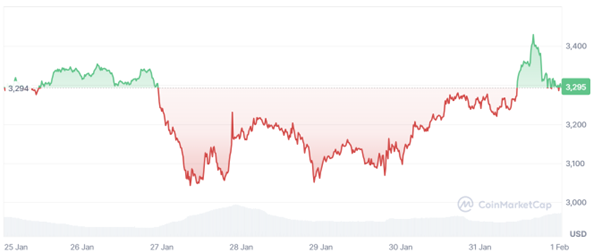
In the 6 February episode of the Luncticoin podcast, the third richest businessman in Mexico, Ricardo Salinas criticized Europe for tilt towards central bank digital currencies and vulnerable investment vitality.
during Podcast episode, Globo Salinas, The Bitcoin Enlightenment: Ending the Fiat Dark Age, the founder and writer of the book of Ricardo Salinas to a museum, saying that there is nothing and has a weak investment climate.
He criticized European regulators for the preparations to implement CBDC on residents, which they compared to animals kept in zoo cages. Salinas stated that the path for them is bitcoin, which can help them to abstract from adverse conditions and transfer their values to a separate universe.
Does Salinas’s comment reflect the real situation in Europe?
While Cellinas is not clearly affected by the way the Crypto region is not affected by Europe, some media outlets present the situation quite opposite and call out A “global standard-seater”, not a zoo in Europe Crypto Regulation. Such deviations between assumptions are explained by difference in values. European Union regulators care more about ending the risks that come with cryptocurrency. Celinas are more interested in occasions associated with cryptocurrency, and alert and conservative approach to the European Union does not match their vision.
The purpose of Europe is to bring orders to the wild west of the modern crypto sector. The European Union regulators try to ensure that no fraud or deception is possible within the Crypto location. However, they also do not hesitate to use new opportunities initiated by Crypto. Different countries of Europe had different approaches for crypto, but mostly, they were not prohibitive, allowing individuals and institutions to experiment with new technology. In 2021, Europe shared Largest Among the Crypto Trading Volumes, while an open banking framework facilitated participation in the Crypto economy. At that time, American institutions were facing debits to use Crypto. Estonia, where voting and healthcare data management use blockchain-based solutions, is an excellent example of leading the world in terms of blockchain adopting.
Probably makes Salinas important about the European Union’s approach to Crypto, the European Union’s CBDCS is to adopt the upcoming adoption. Since 2021, the European Union regulators have been working on creating a legal structure launch Digital euros, something that Europe is going to feed its inhabitants in zoo cages, according to Celinas.
Crypto Maxis, with the US government, usually does not approve CBDC’s idea as they see it as a threat to privacy. Europe is following the feet of China, a country where digital yuan is already in circulation. Russia is going to introduce digital rubles in summer of 2025. CBDCs are the way to use blockchain to promote the efficiency of traditional currencies.
Retail CBDC will complement cash, while wholesale CBDC will promote interbank and securities transactions. Digital Euro with the European Union, where most countries rely on foreign credit card providers, will gain more control over transactions as they will switch to the European payment system.
By eliminating middlemen in digital euro transactions, the payment system will reduce the cost by automatic and decentralizing it, allowing it to facilitate more stable, human error-free, 24/7 working and transparency. The latter is something that can be seen differently, as privacy supporters do not have to share their transactions data with the government. More than this, even though the government itself is not misusing this data and does not sensor transactions, data can be stolen and can be misused by someone else.
CBDC’s historical examples applied in China, Nigeria and Venezuela are hardly inspiring. However, Europe has a chance to set a new quality limit.
CBDCs becoming less popular
A new survey by official monetary and financial institutions shows the platform and the Gisecake+Divest that although most central banks are still working on CBDC projects, 30% of them delay adoption. What is more important, recently, about 15% of central banks have changed against the idea of launching CBDC. It speaks well with a recent ban on the US CBDC program.
The main causes of hesitation are the concerns of privacy, poor experiences of countries that have already launched CBDC, and have less interest of residents. Europe, however, will rarely introduce its CBDC program before India, Brazil and Russia, whose projects are expected to be physical soon.



